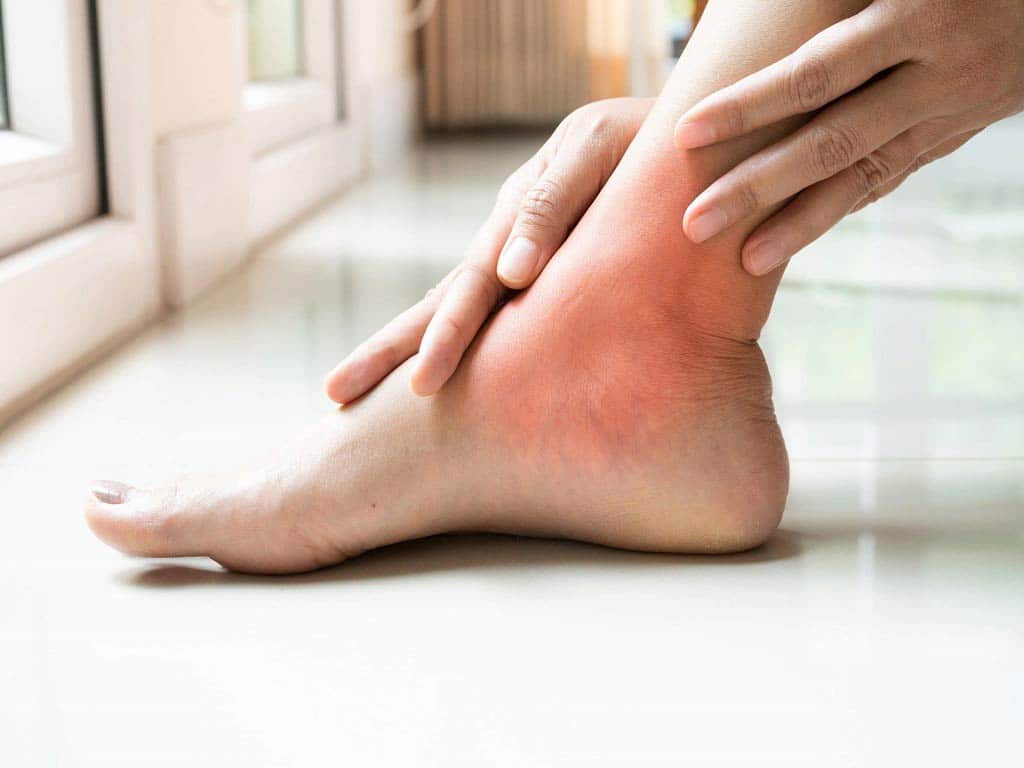
Posterior tibial tendonitis occurs when the posterior tibial tendon becomes inflamed or irritated. It causes significant pain and deformity to the feet and ankles as the condition progresses. It can limit mobility and decrease quality of life as a result. One effective method of alleviating pain from this is using Transcutaneous Electrical Nerve Stimulation (TENS). A TENS unit for posterior tibial tendonitis uses electrical stimulation to induce the body to reduce the pain and can improve healing.
To use a TENS machine, the user must apply the electrodes to the target area and adjust the settings accordingly. It is an effective method that uses the pain-gating mechanism and endogenous opioids for drug-free relief. It is recommended to consult a healthcare provider before using TENS to ensure safety. This article will give an overview of posterior tibial tendonitis, how TENS works, and tips on how to maximise the effectiveness of TENS.
Understanding the Condition Before Using a TENS Unit for Posterior Tibial Tendonitis
Posterior tibial tendonitis occurs when there is damage to the tendon on the inner side of the ankle. It is also known as posterior tibial tendon dysfunction (PTTD). This can cause intense pain in the foot and ankle. It can also limit mobility because the posterior tibial tendon supports the foot arch. Fortunately, a TENS unit for posterior tibial tendonitis can help ease the pain. There are four stages depicting the progression of PTTD.
The first stage occurs when pain and swelling start to occur. There is usually only mild deformity, and the tendon is still intact. In the second stage, the foot will appear flatter because the tendon has become torn and cannot support properly. In the third stage, the deformity becomes significant, and it becomes difficult to correct the foot. At the last stage, the condition affects and deforms the ankle joint as well.
Various causes may result in PTTD. One of them is injury. Sprains or fractures affecting the feet or ankle can cause damage to the posterior tibial tendon. Another cause is arthritis. This inflammatory condition increases the risk of developing PTTD.
Benefits Over Other Treatment Methods
There are several benefits of using TENS as a form of treatment for PTTD. These are some of them:
- Non-invasive: TENS does not require incisions or injections during the treatment session. This eliminates the risks of infections and other complications.
- Drug-free: Individuals do not have to consume medicine for TENS therapy to take effect. Many use it to reduce or replace their intake of medication.
- Portable: many TENS machines have a compact and lightweight design, making them easy to use anywhere.
- Self-administered: TENS is easy to use even while alone. It does not require medical supervision.
- Complementary: people can use TENS with other treatment options.

How Does a TENS Unit for Posterior Tibial Tendonitis Work?
A TENS unit for posterior tibial tendonitis works by sending low-voltage electrical currents to the body. Generally, TENS machines have a frequency range of 1-150 Hz and an intensity range of 0-80 mA. The user may control the output of the TENS machine by adjusting the pulse duration, frequency, and intensity settings. The electrical impulses can trigger the body to alleviate pain.
Using high-frequency stimulation (50-150 Hz) triggers the spinal nerve cells to block the transmission of pain signals to the brain. This is also known as the pain gate mechanism described in the Gate Control Theory of Pain. This is ideal for intense and sudden pain because it takes effect quickly. This setting can also increase blood flow to the target area, improving healing.
Meanwhile, low-frequency stimulation (2-10 Hz) induces the production of endogenous opioids. These hormones are natural painkillers that build up and decrease the overall pain level. Many use this for chronic pain conditions because its effects can last hours after the session. Moreover, endorphins can help reduce inflammation, which can help improve mobility.
How to Use
Using a TENS machine is a straightforward process. To start, the user must place the electrode pads on the target area. Then, they must ensure the pads are securely connected to the controller. Afterwards, they may turn the machine on and adjust the settings.
It is best to start on low settings to avoid electrical shocks or discomfort. Then, they may gradually increase the levels or select a preset mode. TENS sessions usually last between 20 to 30 minutes, but it can vary depending on the settings used. Afterwards, the user may turn the machine off and remove the electrodes.

Tips for Maximising the Effectiveness of TENS Unit for Posterior Tibial Tendonitis
Understanding how to use a TENS unit for posterior tibial tendonitis is crucial for effective treatment. To help with this, the user may read the instructions from the device manufacturer. One tip to maximise the effectiveness of a TENS unit is to observe proper pad placement. They may refer to TENS pad placement charts and guides for this.
Another tip is to clean the area with soap and water before applying the pads. This improves adhesion by removing dirt, oils, and lotions from the skin. The user should also check if the adhesive needs replacement before applying them. Generally, pads can last between 10 to 20 uses. Afterwards, the user must replace the adhesives to ensure they will not fall off during the session.
Furthermore, the user can experiment with different settings to see what works best for them. Lastly, they may consult a healthcare provider for medical advice regarding using a TENS machine for their condition. A professional can form a treatment plan that may further improve the effects of TENS.
Pad Placement Guide
Generally, the users should place the electrode pads on muscles near or on the origin of the pain. For PTTD and other foot-related conditions, the ideal placement for the TENS pads is on the bottom of the feet. They may also apply the pads on the muscles above the ankle joint.
However, they must carefully avoid the ankle bone. Furthermore, they must ensure the pads are at least an inch apart to prevent interference. They must also refrain from applying the pads on irritated, infected, or broken skin. This is because the electrical stimulation could cause the skin condition to worsen.
Conclusion
PTTD is a condition that causes pain and deformity in the feet and ankles. It limits mobility and decreases quality of life. Using a TENS unit for posterior tibial tendonitis is an effective method of alleviating pain caused by the condition. It works by triggering spinal nerve cells to block pain signals from reaching the brain. It also induces the release of endorphins, which can help reduce inflammation and stress.
To maximise the effects of TENS, users may experiment with different settings or select a preset mode. They may also consult a healthcare professional who can diagnose and give advice regarding their condition. Moreover, they can practice proper pad placement to ensure effective delivery of the electrical currents. Those looking for a wireless TENS unit may consider the iTENS from iTENS Australia. It can provide effective relief for pain from various medical conditions.







